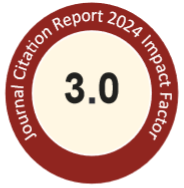Abstract
Quercetin (Q), a bioflavonoid ubiquitously distributed in vegetables, fruits, leaves, and grains, can be absorbed, transported, and excreted after oral intake. However, little is known about Q uptake and metabolism by macrophages. To clarify the puzzle, Q at its noncytotoxic concentration (44μM) was incubated without or with mouse peritoneal macrophages for different time periods. Medium alone, extracellular, and intracellular fluids of macrophages were collected to detect changes in Q and its possible metabolites using high-performance liquid chromatography. The results showed that Q was unstable and easily oxidized in either the absence or the presence of macrophages. The remaining Q and its metabolites, including isorhamnetin and an unknown Q metabolite [possibly Q- (O-semiquinone)], might be absorbed by macrophages. The percentage of maximal Q uptake by macrophages was found to be 2.28% immediately after incubation; however, Q uptake might persist for about 24 hours. Q uptake by macrophages was greater than the uptake of its methylated derivative isorhamnetin. As Q or its metabolites entered macrophages, those compounds were metabolized primarily into isorhamnetin, kaempferol, or unknown endogenous Q metabolites. The present study, which aimed to clarify cellular uptake and metabolism of Q by macrophages, may have great potential for future practical applications for human health and immunopharmacology. © 2015, Food and Drug Administration, Taiwan. Published by Elsevier Taiwan LLC.
ScienceDirect Link
Recommended Citation
Liu, C.-J.; Liao, Y.-R.; and Lin, J.-Y.
(2015)
"Quercetin uptake and metabolism by murine peritoneal macrophages in vitro,"
Journal of Food and Drug Analysis: Vol. 23
:
Iss.
4
, Article 24.
Available at: https://doi.org/10.1016/j.jfda.2014.06.011
Creative Commons License

This work is licensed under a Creative Commons Attribution-Noncommercial-No Derivative Works 4.0 License.
Fulltext URL
https://www.sciencedirect.com/science/article/pii/S1021949814001550/pdfft?md5=57054b94b72f84cf84d0cf8337f41daa&pid=1-s2.0-S1021949814001550-main.pdf
Included in
Food Science Commons, Medicinal Chemistry and Pharmaceutics Commons, Pharmacology Commons, Toxicology Commons

